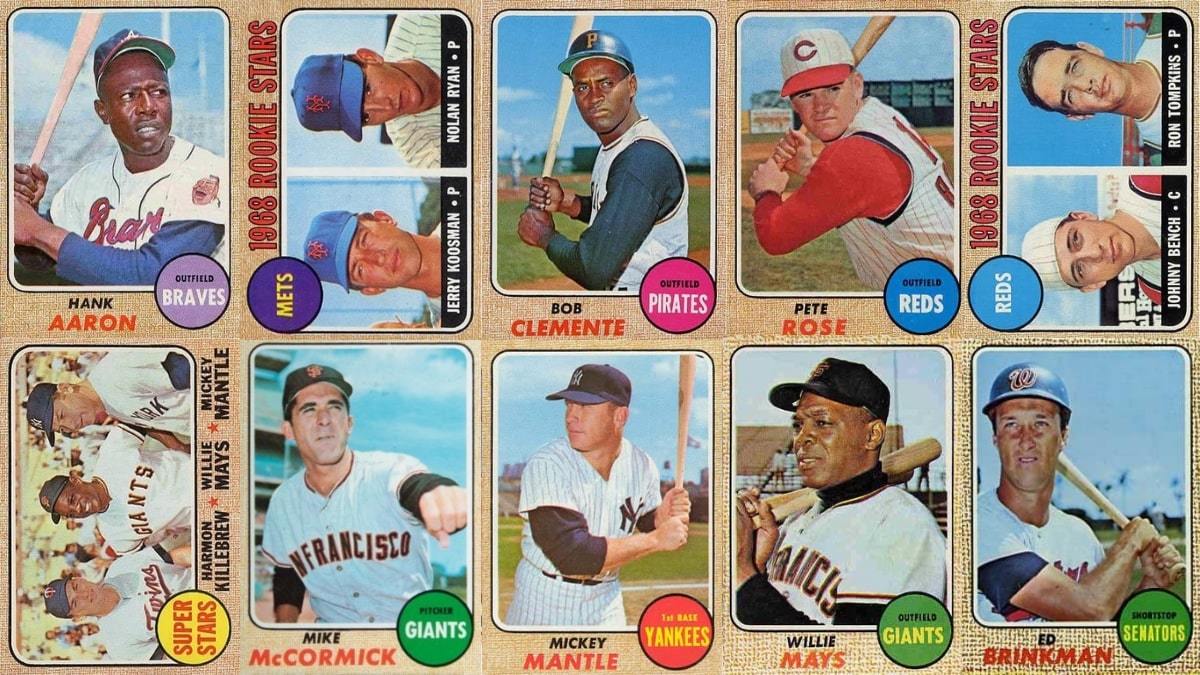There is a great divide between Hobby and Retail trading cards. Here is some insight into the two and the insert cards that have come to define them both.
You’ve seen them everywhere from superstores like Walmart and Target, smaller chains like Kmart and even at the corner convenience store. They are the vice, the hobby, that has followed many a young boy from adolescence through adulthood. For others, they were stored away in a basement or an attic only to be thrown away during spring cleaning by mothers across the country (as the story goes). Foil packages measuring two-and-a-half by three-and-a-half inches bearing the image of an easily identifiable image of a young athlete with a recognizable team insignia emblazoned across his chest. We are talking about baseball cards.
Grouped under the broad title of “trading cards,” baseball cards have come a long way since their inception and ingratiation into the realm of every day America. Starting out as inserts into packs of tobacco in the early 1900s in limited quantities baseball cards didn’t see a true rise to the forefront of society until Topps exploded on the scene in 1952. This is the set that holds ownership of one of the most coveted baseball cards of all-time, the Mickey Mantle rookie card.
These are the cards that were printed on flimsy, low gloss cardboard that lead to easily knicked corners and a less-than-desirable urge to collect. Rather, they were traded with friends, “flipped,” put into bike spokes, or just tossed by the wayside. There also wasn’t much focus put on the cutting of cards in the factory. This is when full sheets were divided into individual cards. Because of these factors, finding any older card from the 1950s through the 1990s in mint condition is near impossible.
The mid 1990s saw a rise in collecting due to the development of “insert cards.” Along with this came a rise in pricing and an ever-growing line of differentiation between “Hobby” and “Retail.”
Insert Cards: The Ball Cap Is (Not) The Limit
Starting out as higher-glossed and serial numbered versions of “base” cards, inserts gained fanfare by adding a thrill-of-the-chase factor to card collecting. Base cards are the standard line of cards (everything below an insert) that compile the complete set and take up the majority of space in both hobby and retail packs. As the years have gone on and the hobby has continued to sky rocket so to have the types and levels of insert cards.
Autographs: Autographed insert cards are some of the most sought after in the industry. While there are different tiers of autographs (some combined with Game-Used memorabilia (see Game-Used) within any given set, they are a fun addition to the hobby. They span the entire gauntlet of Major League Baseball and feature some lesser named rookies and future stars, rising all the way up through to the game’s top superstars. Autographed sets are more likely than not released in a Serial Numbered series. This not only adds to value but also leads to greater difficulty in finding them.
Game-Used: Game-Used Memorabilia insert cards are the ones that give the collector the aura of being “in the game.” These cards feature everything from game-used jerseys, bats, pants, cleats, and caps to batting gloves, bases, balls, and jersey patches. They also feature the previously named game-used items from events such as spring training, the All-Star Game/Home Run Derby, and the postseason (the rarest as only 8 teams appear each season).
Refractors: Refractor inserts add a whole new level to baseball card collecting. Perfected by Bowman, they come in different colors, patterns, and levels of serial numbering. The serial numbering is generally based upon color. The tiers of color are based upon the set. They range anywhere from the 1000s down to a 1/1.
1/1:As can be figured from the name, 1/1 inserts are the rarest of all. These range from refractors, to game-used cards which feature some of the game’s most sought-after players from the current day as well as Hall-of-Famers such as Ty Cobb, Babe Ruth, Lou Gehrig, Mickey Mantle, and many others. These also feature “cut-signature” cards which feature an authentic signature on a piece of paper from whatever era said player is from and it is inserted into the card stock, much like game-used memorabilia cards. 1/1 printing plates are also featured in many sets and are a great addition to any collection.
Hobby Versus Retail: The Great Divide
Some may think that a pack of cards is a pack of cards and there is no difference whether it is purchased at the checkout counter as an impulse buy or sought after in a hobby shop. Others may think that the cheaper price tag on a Retail pack is an easier, more inviting way to seek out top-notch insert cards. There is some validity to both.
A Retail pack is exactly what it sounds like, a pack sold in retail stores that are meant to reach the masses and sell in bulk. They will generally be seen in small, prepackaged boxes boasting 10 packs for $9.99 (or any other arbitrary price for the level of cards you are purchasing. On the side of the box or on the back of packs, there will be set odds of acquiring any number of insert cards (Ex: 1:3,651). The catch is that the lower price tag brings more astronomical odds and fewer types of inserts that are added to the Retail product line. In essence, you will not be pulling that 1/1 Signature cut of Honus Wagner anytime soon at Walmart.
In the past few years, however, in an effort to make the Retail market more appealing to collectors, both young and old, game-used and autographed cards have been inserted at upwards of 1 per box. While it is a nice pull, it does not hold the worth that the higher-priced hobby box memorabilia cards and autographs do.
Hobby packs and boxes hold a higher price tag and pack a greater punch in the grand scheme of things. The odds of pulling high-end inserts, although still low, are greater than at the retail level. The downfall of Hobby packs is they can only be purchased in an accredited hobby shop that specializes in selling trading cards, memorabilia, and hobby items of all types.
Always make sure that you trust the person running the shop. Some may “shark” through a hobby box and pull the better insert cards and sell them at a premium. These cards tend to be thicker than the base cards and standard inserts and easier to locate by simply squeezing packs together to judge thickness. In recent years, card companies have made this more difficult by adding “fillers” to packs that do not contain an insert like an autograph or a Game-used memorabilia card in order to make every pack the exact same thickness to prevent consumers missing out on the chase.







